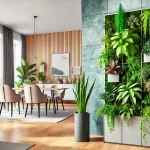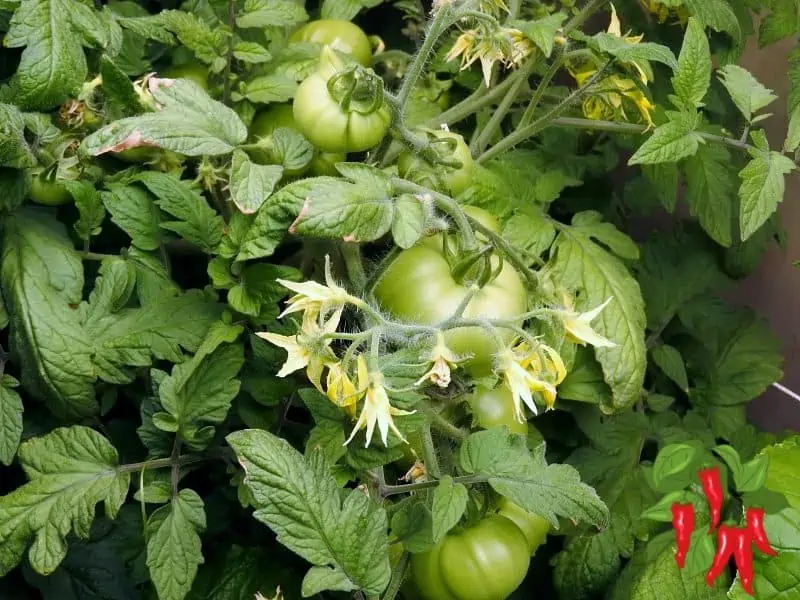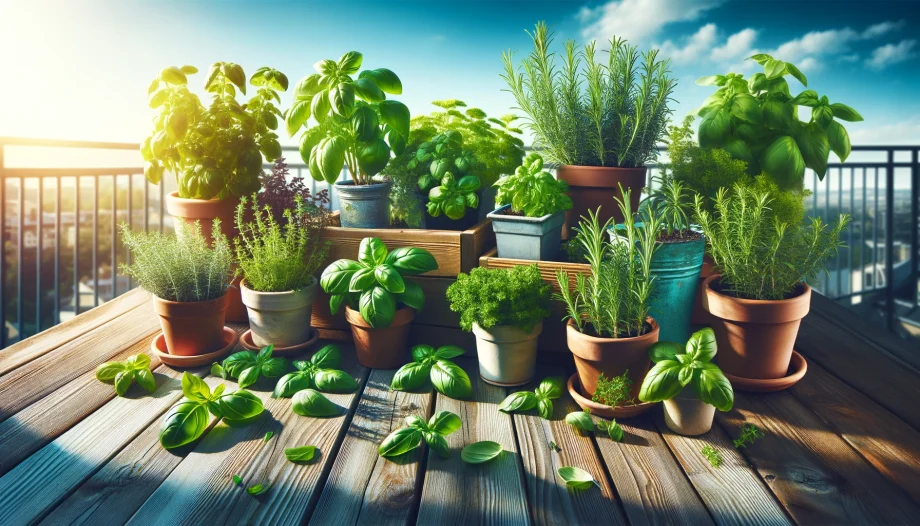This post may contain affiliate links. If you buy something from one of our links we may earn a commission. Thanks
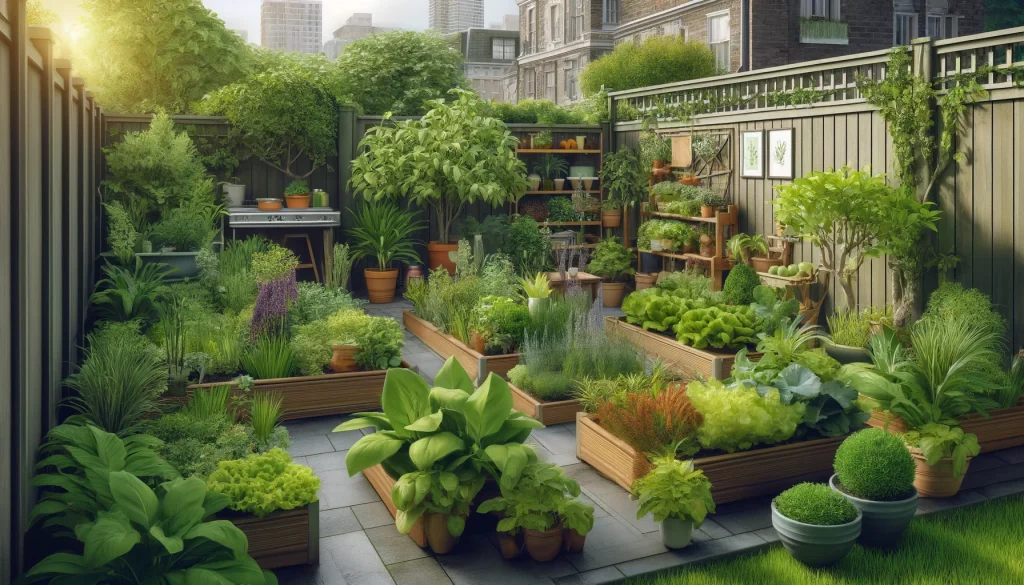
Unlock the secrets of how to plan your urban backyard garden with our easy guide! Transform your small space into a lush, productive haven in no time.
How To Plan Your Urban Backyard Garden
Key Takeaways:
- How to plan your urban backyard garden starts with assessing your space, choosing the right plants, and considering your climate.
- Utilize vertical gardening, select container-friendly crops, and create a layout that maximizes sunlight.
- With these steps, you can transform even the smallest space into a lush urban oasis.
Ready to turn your concrete jungle into a green paradise? Discover how to plan your urban backyard garden and bring a touch of nature to your city life.
Whether you have a tiny balcony or a compact yard, our guide will help you create a beautiful, thriving garden that’s perfect for relaxation and homegrown produce.
Planning Your Urban Backyard Garden
Dreaming of a green oasis in the city? Planning your urban backyard garden can turn that dream into reality.
With the right planning and creativity, you can cultivate a beautiful and productive garden that provides fresh produce, enhances your living space, and contributes to a healthier environment.
What Is Urban Gardening?
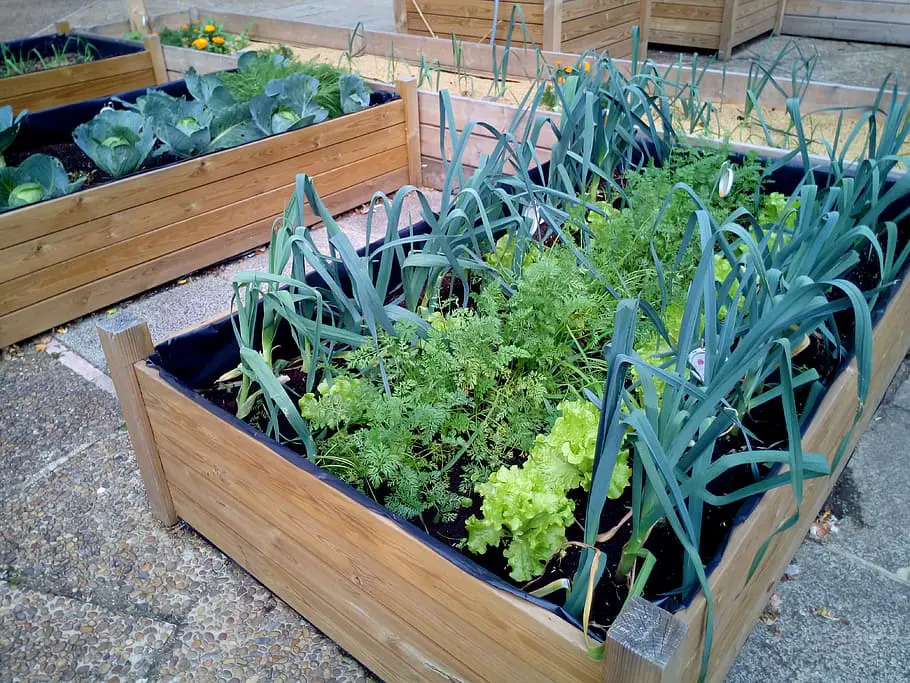
Urban gardening is growing plants in an urban environment, like cities or suburbs, where space is limited.
It’s become popular for its benefits, such as fresh produce, beautification of urban spaces, and environmental sustainability.
Urban gardening can take the form of community gardens, rooftop gardens, vertical gardens, or indoor gardens in small apartments, maximizing limited gardening space in cities.
How Is Urban Gardening Different From Traditional Gardening?
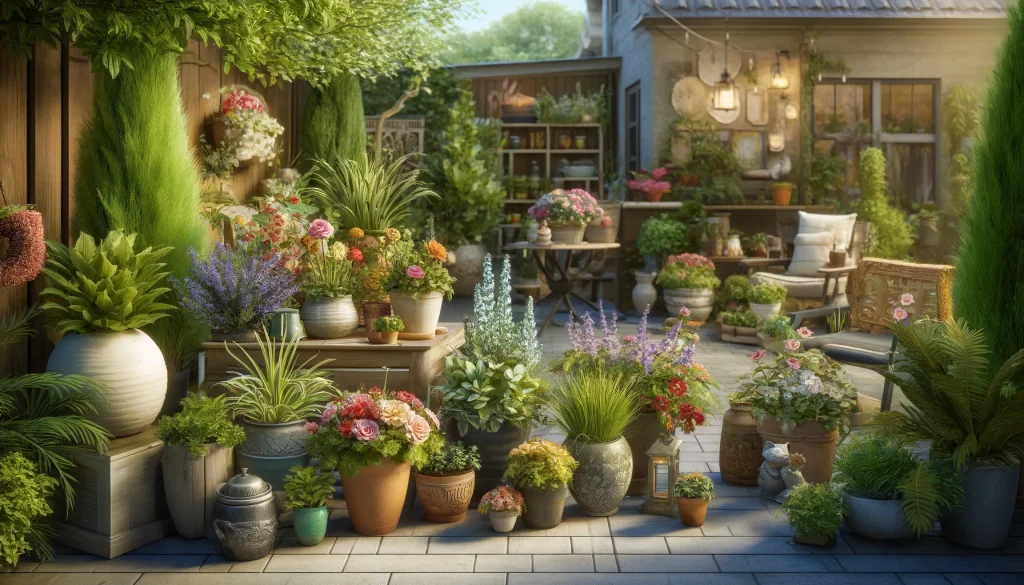
Urban gardening differs from traditional gardening due to the limited space available in cities, leading to the use of containers and raised beds for plant cultivation.
Urban gardeners must choose crops that thrive in containers, require minimal maintenance, and can withstand urban environmental conditions such as pollution and limited sunlight.
Why Start an Urban Garden?
Starting an urban garden is rewarding, offering benefits like environmental sustainability, community engagement, and personal satisfaction.
It reduces the carbon footprint, improves air quality, and creates green spaces that support biodiversity.
Gardening in urban settings brings joy and fulfillment as you watch plants thrive under your care and harvest fresh produce.
Benefits of Urban Gardening
Urban gardening provides access to fresh vegetables and herbs, fosters community engagement, and promotes sustainable practices within urban environments.
Homegrown produce is packed with essential vitamins, minerals, and antioxidants, free from harmful pesticides and chemicals.
Community gardens bring people together, strengthen social ties, and contribute to a greener urban environment.
Engaging in sustainable practices like composting and water conservation reduces the carbon footprint of food production and enhances the overall environmental health of cities.
How To Plan Your Urban Backyard Garden
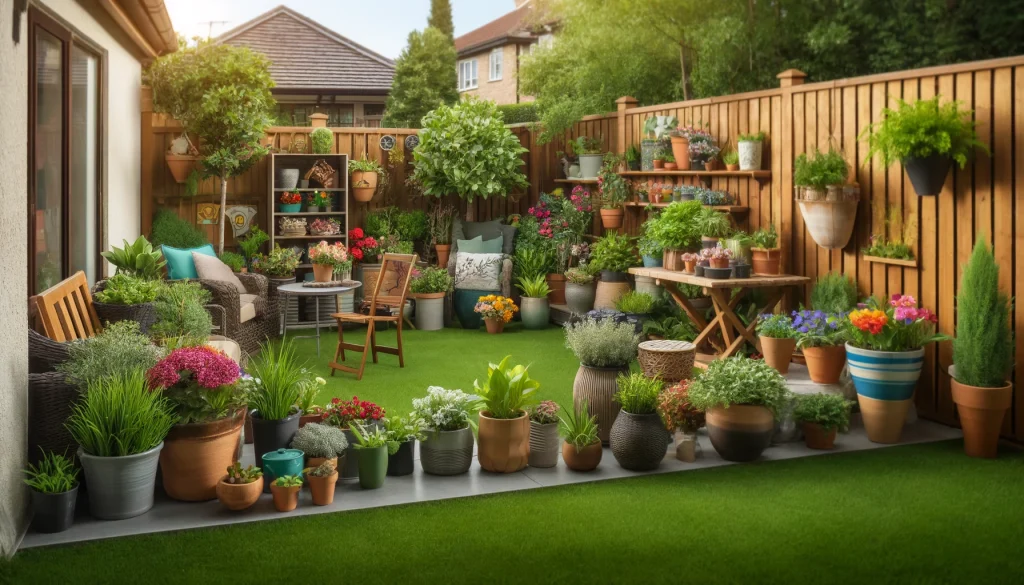
To plan your urban backyard garden, consider factors like urban garden design, essential equipment, seed selection, and maximizing available space.
Incorporate elements like raised beds, vertical gardening systems, and efficient pathways.
Choose compact tools, irrigation systems, and quality soil.
Opt for organic, locally adapted seeds and utilize vertical space with trellises, hanging planters, and companion planting.
Assess Your Space
Assess your available space to determine the layout, consider climate conditions, and optimize plant cultivation.
Observe sunlight exposure, microclimates, and soil quality. Measure your space accurately and utilize vertical space with trellises or hanging baskets.
Choose Your Crops
Select crops that suit your preferences and available space, such as leafy greens, root vegetables, and microgreens.
Consider your local climate, sunlight availability, and water requirements for successful growth.
Consider Your Climate
Consider your local climate to ensure optimal growth and productivity. Research plants best suited to your climate, adapt your garden maintenance schedule for seasonal changes, and implement mulching techniques and proper watering schedules.
Plan Your Layout
Create a functional and aesthetically pleasing layout by utilizing vertical space, maximizing sunlight exposure, incorporating multi-functional furniture, and creating defined zones with paths and walkways. Add water features and integrate sustainable design elements like rainwater harvesting systems.
Best Crops for Urban Gardening
Choose crops like berries, peppers, peas, tomatoes, herbs, and salad greens that are well-suited to compact spaces. Utilize vertical space and incorporate a variety of plants for a diverse harvest.
Essential Tools for Urban Gardening
Equip yourself with small garden implements like trowels, hand pruners, and cultivators, as well as watering cans or hoses, containers or raised beds, and compost bins for successful plant care and maintenance.
Maintaining Your Urban Garden
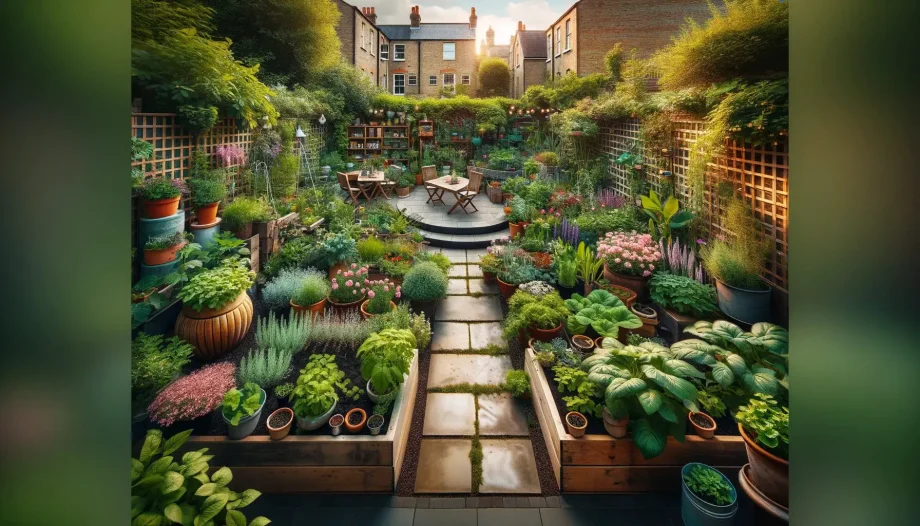
Maintain your urban garden with regular watering and fertilizing, effective pest control measures, and timely pruning and harvesting.
Establish a consistent watering schedule, use organic fertilizers, and adapt your gardening practices to your local climate.
Urban Backyard Garden FAQ
Have questions about how to plan your urban backyard garden? You’re not alone!
From choosing the right plants to understanding city regulations, there’s a lot to consider.
Below are some frequently asked questions that can help guide you through the process of creating your own urban oasis.
Q. What are the first steps in planning an urban garden?
A. Start by researching what plants grow well in your area. Decide what you want to grow and draw a plan for your garden, considering plant height and sunlight exposure. Make sure your plants won’t block any sprinkler systems.
Q. How can I maximize light exposure for my plants?
A. If possible, use south-facing window sills, balconies, or front yards for maximum light exposure.
For shade-tolerant plants or indoor growing, consider using grow lights.
Q. What are some suitable growing methods for urban gardening?
A. You can use raised beds, containers, vertical gardens, indoor gardening, or balcony and rooftop gardening.
Each method has its own advantages and considerations, such as drainage, weight, and exposure to sun and wind.
Q. Do I need to check any regulations before starting my urban garden?
A. Yes, check for any restrictions from homeowners associations, city ordinances related to hedges, fence heights, watering, grass height, and regulations on compost piles.
Q. What equipment do I need for urban gardening?
A. Essential equipment includes rototillers, shovels, spades, gardening containers, potting soil, compost, plant markers, seeds, gardening gloves, trowels, watering cans, irrigation supplies, fertilizers, and mulch.
Q. How can I ensure a successful harvest in a small urban space?
A. Focus on growing quick crops like greens, radishes, turnips, and herbs. Consider growing microgreens and using techniques like high tunnels or poly-low tunnels for season extension. Planning and efficient use of space are key.
Q. How do you plan an urban garden?
A. Planning an urban garden involves assessing your available space, considering the amount of sunlight it receives, and choosing plants that are suitable for your climate and space constraints.
Research what plants grow well in your area and create a garden layout that maximizes your space.
Q. How do you lay out a backyard garden?
A. Start by sketching a rough plan of your garden, considering the size and shape of your space. Group plants with similar water and sunlight needs together.
Utilize vertical space with trellises or hanging planters for climbing plants, and arrange taller plants at the back to ensure all plants receive adequate sunlight.
Q. How do you make a small urban garden?
A. To create a small urban garden, focus on using containers, vertical gardening techniques, and choosing compact plant varieties.
Utilize balconies, windowsills, and rooftop spaces. Select plants that thrive in limited space and consider using multi-functional furniture with built-in planters.
Q. How do I start a backyard garden from scratch?
A. Starting a backyard garden from scratch involves choosing a suitable location, preparing the soil, selecting the right plants, and designing your garden layout.
Begin with easy-to-grow plants and gradually expand your garden as you gain more experience. Consider raised beds or containers if your soil is poor.
Q. How do I start a garden with no experience?
A. Start small and choose low-maintenance plants that are known to be easy to grow. Research basic gardening techniques such as watering, fertilizing, and pruning.
Don’t hesitate to seek advice from local gardening groups or online forums. Learning by doing is key, so don’t be afraid to experiment.
Q. How do you start a garden for dummies?
A. Begin with a simple plan, focusing on a few easy-to-grow plants. Utilize resources like gardening books for beginners, online tutorials, and local gardening workshops to learn the basics.
Start with container gardening or a small raised bed to keep things manageable. Pay attention to the specific needs of your chosen plants and monitor their progress regularly.
Conclusion: Embracing the Urban Gardening Journey
Embarking on the urban gardening journey is a rewarding and enriching experience that brings nature closer to your urban dwelling.
With the right planning, creativity, and care, you can transform even the smallest spaces into vibrant, productive gardens.
Let’s recap some key points and offer encouragement to all aspiring urban gardeners.
Start Small and Grow
Begin with a few easy-to-grow plants and gradually expand your garden as you gain confidence and experience.
Remember, every gardener starts somewhere, and small successes lead to bigger achievements.
Embrace Learning
Gardening is a continuous learning process. Embrace the challenges and celebrate the victories. Seek advice, read books, and connect with fellow gardeners to enhance your knowledge and skills.
Enjoy the Process
Gardening is not just about the end result but also about the journey. Enjoy the process of nurturing your plants, observing their growth, and connecting with nature in your urban oasis.
Share Your Harvest
One of the joys of gardening is sharing the fruits of your labor with friends, family, and neighbors.
Whether it’s a bouquet of flowers or a basket of homegrown vegetables, your garden’s bounty is sure to bring smiles and foster community spirit.
Sustain and Expand
As you become more comfortable with urban gardening, explore sustainable practices like composting, rainwater harvesting, and organic pest control.
Consider expanding your garden with new plants, vertical gardens, or even a rooftop garden.
Final Thoughts
Remember, urban gardening is about creativity, sustainability, and resilience. It’s a way to bring beauty, food, and nature into our lives, no matter the size of our living spaces.
Read and learn more: The Beginner’s Guide to Starting a Backyard Urban Garden
So go ahead, get your hands dirty, and start your urban gardening adventure today! Happy Gardening!
Visit my Amazon Influencer Page for videos and gardening products Grow Your Own Garden





